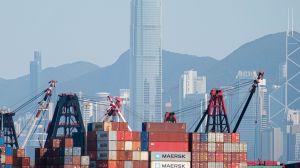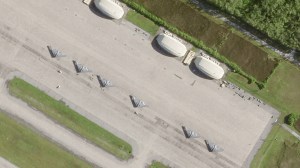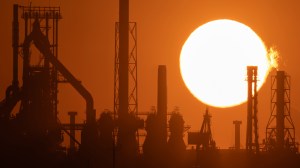The largest fire currently in the State of California tore through an historic northern town Wednesday night as forecasters issued a red flag warning due to hot, dry and windy conditions.
The raw video above shows the Dixie Fire flames burning trees and buildings in Greenville. It also shows a massive column of smoke that rose 30,000 feet into the air. The wall, known as a pyrocumulus cloud, was created by heat and flames according to State Fire Operations Section Chief.
The fire wiped out historic buildings and left much of the town center in ashes. A photographer on assignment for The Associated Press described seeing a gas station, hotel and local bar burned to the ground.
Plumas County Supervisor Kevin Goss wrote Thursday on Facebook the fire “burnt down our entire downtown. Our historical buildings, families homes, small businesses, and our children’s schools are completely lost.”
“I am at a loss for words and my heart goes out to everyone of you that suffered loss, evacuated and weary on what is to come,” Goss wrote in the post.
Officials could not immediately say how many buildings were damaged, but photos and video from the scene indicate the destruction was widespread.
“We lost Greenville tonight,” U.S. Rep. Doug LaMalfa said in an emotional Facebook video. “There’s just no words.”
According to the National Wildfire Coordinating Group, the Dixie Fire had spread to more than 320,000 acres and was 35 percent contained as of early Thursday afternoon. It has threatened thousands of homes and destroyed 67 houses and other buildings since starting on July 14.
The recent damage comes amid a red flag warning issued by forecasters. They say high temperatures, low humidity, and winds of up to 40 mph could drive flames through timber, brush and grass especially along the northern and northeastern sides of the Dixie Fire.
Winds were expected to change direction multiple times on Thursday. Officials said this puts pressure on firefighters at sections of the fire that haven’t seen activity in several days.
“I think we definitely have a few hard days ahead of us,” Shannon Prather with the U.S. Forest Service said.
According to fire spokesman Mitch Matlow, the trees, grass and brush were so dry “if an ember lands, you’re virtually guaranteed to start a new fire”. He also added those pyrocumulus clouds bring chaotic winds, making a fire “critically erratic”. That makes it hard to predict the direction of growth.









